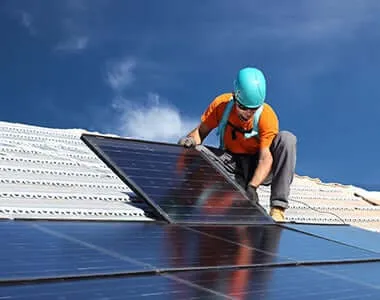Installing Solar Panels on a Shed Roof for Sustainable Energy Solutions and Cost Savings
Installing Solar Panels on a Shed Roof A Sustainable Solution
As the demand for renewable energy continues to grow, many homeowners are looking to harness the power of the sun to reduce their carbon footprints and lower energy costs. One of the most effective and accessible ways to do this is by installing solar panels on a shed roof. This not only maximizes the use of available space but also provides a sustainable energy source for various applications.
Understanding the Benefits of Solar Panels
Solar panels convert sunlight into electricity, which can be used to power lights, tools, and other equipment in your shed. This can significantly reduce reliance on traditional power sources, leading to lower energy bills. For those who rely on their sheds for hobbies or work, having a consistent power supply can enhance productivity and convenience. Furthermore, generating your own power can safeguard you against rising utility rates.
Additionally, installing solar panels on a shed roof can contribute to a greener planet. By opting for solar energy, you are reducing greenhouse gas emissions and promoting sustainable practices. This is particularly relevant as more people seek to address climate change and its effects on our environment. Even small contributions to renewable energy initiatives can have a positive impact when scaled across communities.
Choosing the Right Solar Panel System
When considering solar panels for your shed, the first step is to determine your energy needs. Evaluate the appliances and tools you plan to power from the shed. A typical solar panel system consists of several components solar panels, an inverter, mounting hardware, and, possibly, a battery storage system. The size of the solar panel array will depend on the energy consumption of your shed's equipment and the available roof space.
The orientation and angle of your shed roof play a critical role in the system’s efficiency. South-facing roofs generally receive the most sunlight and are ideal for solar panel placement. If the roof has a pitch, you may need to adjust the tilt of the solar panels to optimize sunlight exposure.
solar panels for a shed roof

Installation Considerations
Installing solar panels on a shed roof can be a DIY project for those with some technical expertise, but it’s often wise to consult or hire professionals. They can ensure that the installation adheres to local building codes and safety regulations. Moreover, they can help you navigate any permitting processes required for solar installations in your area.
It’s also essential to consider the structural integrity of your shed. Ensure it can support the weight of the solar panels, especially during adverse weather conditions. Consulting with a structural engineer may be beneficial, especially for older structures.
Maintenance and Longevity
One of the advantages of solar panels is their low maintenance requirements. Regular cleaning and periodic inspections can help ensure optimal performance. It’s advisable to check for debris, such as leaves or snow, which may accumulate on the panels and obstruct sunlight. Most solar panels come with warranties ranging from 20-25 years, making them a long-term investment.
Conclusion
Installing solar panels on a shed roof is a practical and environmentally friendly solution for generating renewable energy. By evaluating your energy needs, selecting the right system, and ensuring proper installation and maintenance, you can effectively utilize solar power to sustain your activities in the shed. As technology continues to evolve and more individuals embrace sustainable practices, harnessing solar energy becomes not just an option, but a necessity for a greener future. Embrace the sun, and let your shed contribute to a more sustainable world.
-
Unlocking Energy Freedom with the Off Grid Solar InverterNewsJun.06,2025
-
Unlock More Solar Power with a High-Efficiency Bifacial Solar PanelNewsJun.06,2025
-
Power Your Future with High-Efficiency Monocrystalline Solar PanelsNewsJun.06,2025
-
Next-Gen Solar Power Starts with Micro Solar InvertersNewsJun.06,2025
-
Harnessing Peak Efficiency with the On Grid Solar InverterNewsJun.06,2025
-
Discover Unmatched Efficiency with the Latest String Solar InverterNewsJun.06,2025







